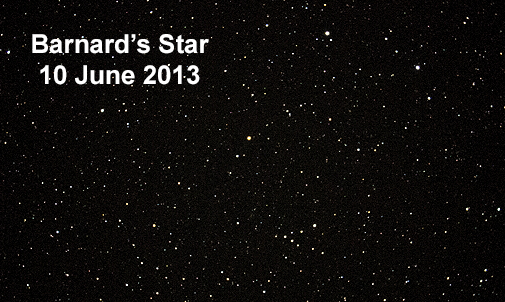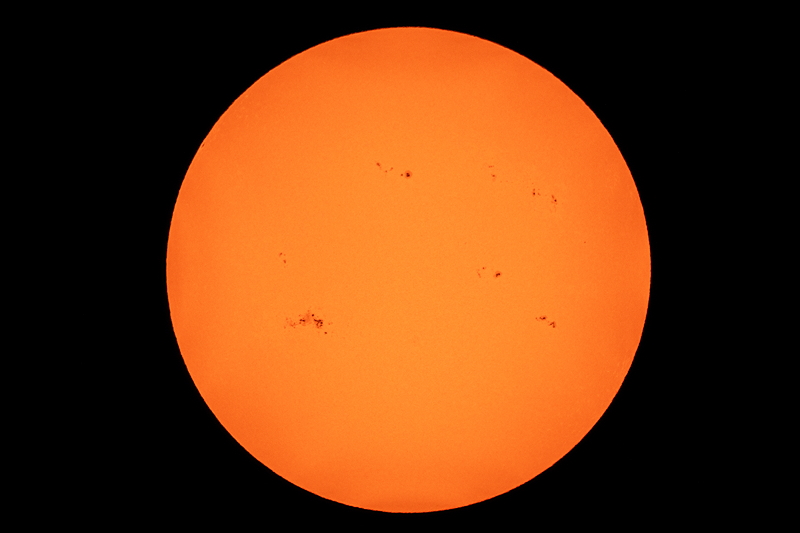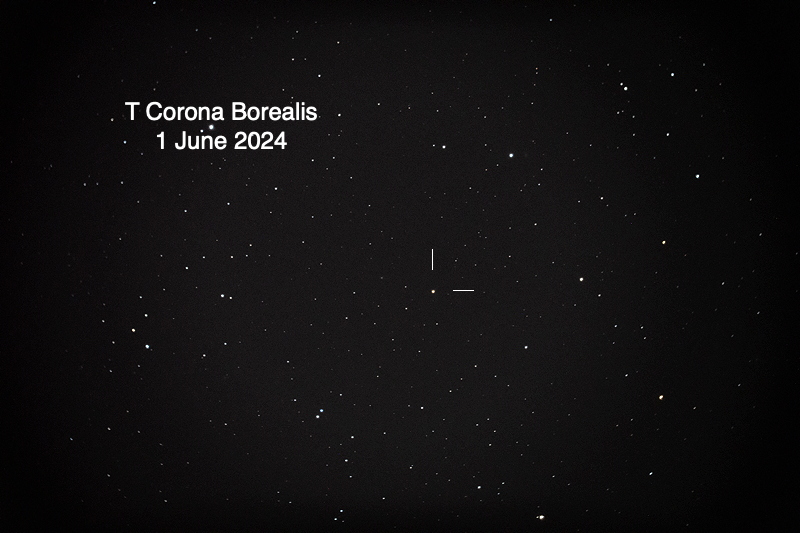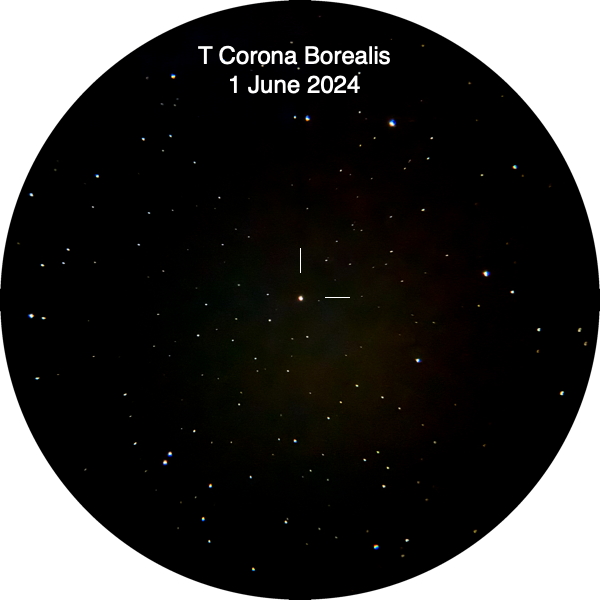Barnard's Star, Sun,
T Corona Borealis pre-nova
Posted: 2 June 2024
I imaged Barnard's Star on the previous session. I made an animation of my images of Barnard's Star taken in 2013, 2019, and 2024 to show its rapid motion. At about 6 Lightyears distance, Barnard's Star is the closest star (except for the Sun) visible from Cassiopeia Observatory.

|
Open: Saturday, 1 June 2024, 1726 MST Temperature: 84°F |
Session: 1979 Conditions: Clear, breezy |
Equipment:
12" f/8 LX600 w/StarLock
2" 24mm UWA eyepiece
Solar Filter
Focal Reducer
2" 30mm eyepiece
Camera:
D850 DSLR
iPhone 15 Pro Max
I opened the observatory two hours before sunset on Saturday, 1 June 2024, in order to image the Sun. Sunspot AR3697, which was sunspot AR3664 that gave us the Aurora Borealis Northern Lights seen from Cassiopeia Observatory 10-11 May 2024, has been very active.
Attached the Solar Filter to the 12" telescope.
1736 MST: LX600 ON, StarLock OFF, High Precision OFF.
Viewed the Sun, 102X. Sunspot AR3697 and several other smaller sunspots were visible.
Mounted the D850 DSLR at prime focus and took this image (1/1600th sec, ISO 400).

The Sun was now getting behind a tree.
1751 MST: LX600 OFF.
I then reviewed the T Corona Borealis star chart so that I would avoid the pointing error that occurred on the previous session.
1910 MST: The breezes had calmed down. I relaxed on the observatory patio bench.
1929 MST: Sunset.
2000 MST: LX600 ON, StarLock OFF, High Precision OFF.
Slewed the 12" telescope to Epsilon Corona Borealis. Mounted the D850 DSLR at prime focus + focal reducer.
2011 MST: Relaxed on the bench while waiting for the sky to get darker.
2040 MST: Back in the observatory. Focused on Epsilon Corona Borealis and locked the 12" mirror.
2047 MST: StarLock ON.
I then did a series of StarLock autoguided images, 30 seconds, ISO 3200, and starhopped to T Corona Borealis.

2105 MST: The wind dramatically returned.
Viewed T CrB, 102X and 81X.
Attached the LiDAR Cover on the iPhone 15 Pro Max and mounted the iPhone on the 2" 30mm eyepiece using the 3-axis adapter. Took this StarLock autoguided image of T CrB, afocal 81X, using the Camera app (Night Mode, 30 seconds, 1X lens).

2117 MST: StarLock OFF.
I have now imaged T CrB in its pre-nova state using several fields-of-view and cameras. See the Sky Photo Album for the images. To learn more about the probable upcoming nova of T Corona Borealis, see "How to see the nova ("new star") in Corona Borealis".
Viewed T CrB, 102X.
2122 MST: LX600 OFF.
2133 MST: Took a Sky Quality reading and reported the result to Globe at Night.
|
Close: Saturday, 1 June 2024, 2137 MST Temperature: 73°F |
Session Length: 4h 11m Conditions: Clear, Breezy, SQM 20.94 |
Comments are welcome using Email. Please read the Email Etiquette guidance.
Cassiopeia Observatory Home Page
Copyright ©2024 Michael L. Weasner / mweasner@mac.com.
URL = http://www.weasner.com/co/Reports/2024/06/02/index.html
